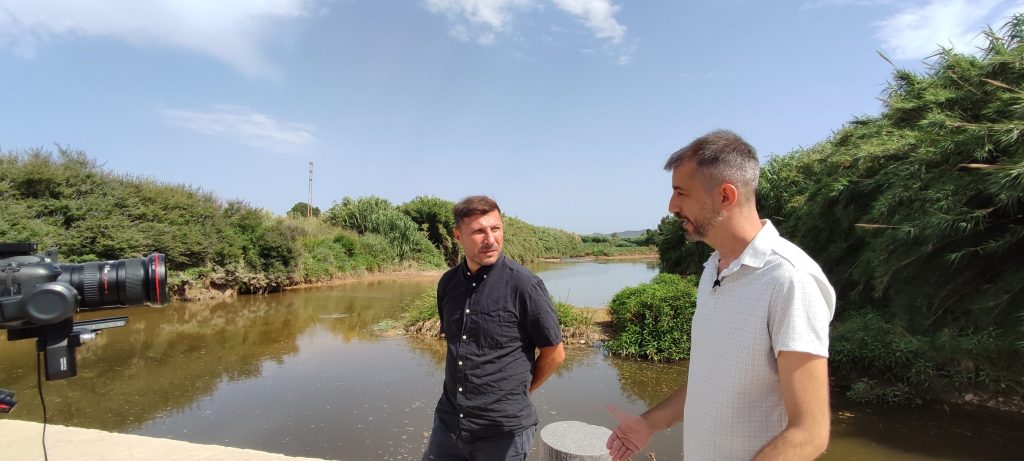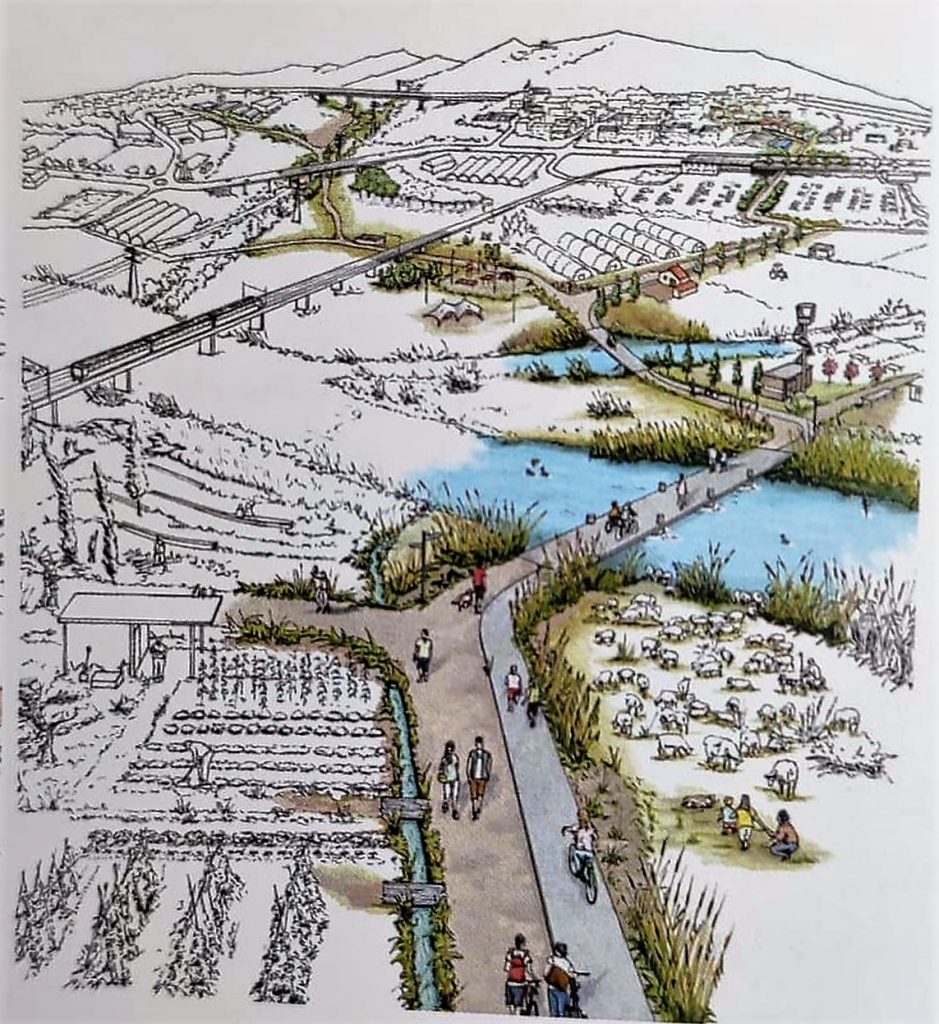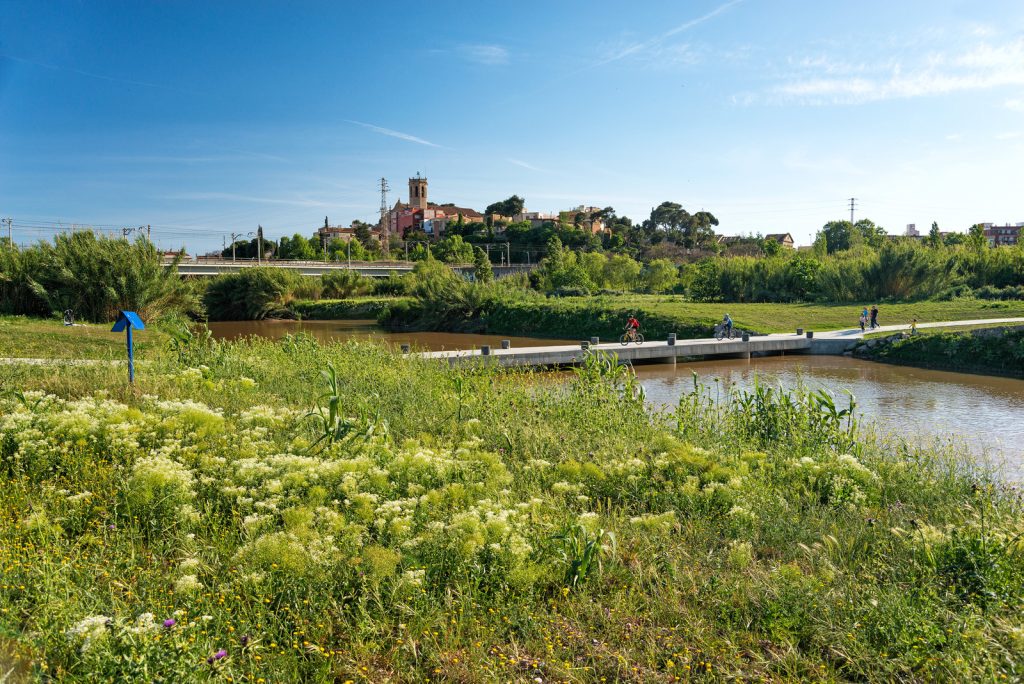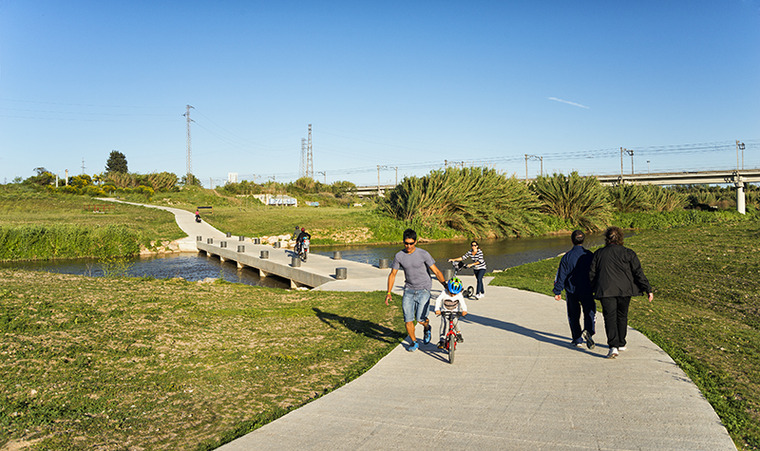The Barcelona Metropolitan Area has a lot of spaces where water flows or which are in the vicinity of a stream or river. AMB put a lot of though on how those places can be valued and appreciated by citizens. The solution found was to create bridges over these waters to encourage walking, cycling or outdoor sports. From 2015 until now, 60 km of such bridges have been built with a total value of 40 million euros.
The UrbanizeHub team visited a specially designed site some time ago in Sant Boi de Llobregat, near the airport. Technically, these crossings cannot be called bridges because they are not supported by vertical structures. Alvarro Saiz, road and bridge engineer, explained to us that these suspended constructions are called fords and one of their strengths is that they allow them to be flooded without undergoing structural changes. These floods don’t happen very often, maybe 4-5 times a year, but even then they are properly marked through signs and made off limits to people.

Alvarro Saiz tells us about how the round was created
The project came to life at the request of the Local Councils of the municipalities of Sant Joan Despi and Sant Boi de Llobregat and won co-financing from the European Fund for Regional Development, being completed in the period 2012-2015. The ford consists of several series of cement blocks measuring 5.5 m in width and 2 m in height. In the edges there are some concrete cylinders that delimit the safety zone for the passage of pedestrians or cyclists to avoid accidents. During construction, the river was temporarily diverted with a channel and the pavement was leveled to balance the unevenness on the two banks.
The success of such a project is measured by how it looks, but most importantly how it is used by people. For this reason there is a network of sensors that transmit signals related to how many have traveled there in a certain period, whether they have done it on foot or by bicycle, and whether they have encountered certain problems on the route.
These projects are also listed in the Metropolitan Urbanism Master Plan as best practice models for what it means to capitalize on green-blue infrastructure. Alvarro told us how the rivers are a part of the people’s history, of those who grew up in the area and who saw how the city around them was changing but the river had remained as faithful as possible to their childhood memories. Precisely because it is an anchor to the identity of the place, these projects are carefully followed by the citizens who get involved in protecting and arranging the new spaces. People become active partners, not just beneficiaries, in these projects and want their voices to be heard.

The fords are a solution for what it means to create links between communities, but especially for valuing rivers and green spaces. People feel good there and use the decks for walks every day. During our time with Alvarro, we saw an elderly couple walking arm in arm, parents with children on bikes, young adults jogging, and teenagers with their headphones on full blast. Barcelona Metropolitan Area wants to replicate this type of project wherever municipalities want to bring people together and create sustainable routes between them.

Photo source: AMB
This article is part of the EU Commission project Functional Areas in the EU






